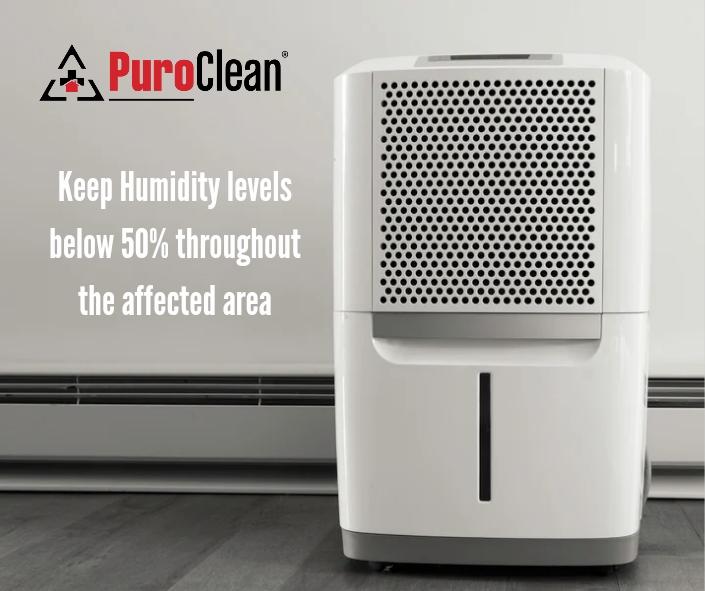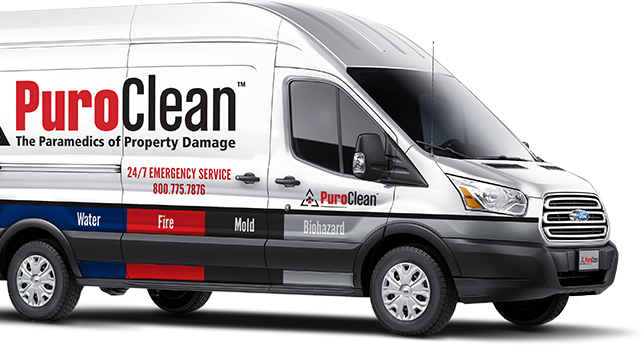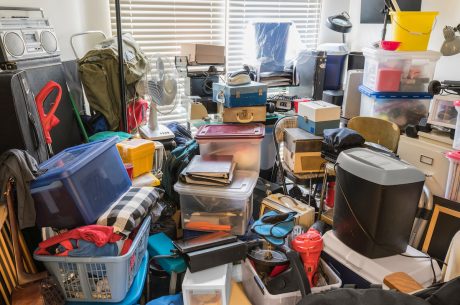Key Takeaways
- Flash floods in Rockland County are real and recent, with Hurricane Ida (2021) and the Hudson Valley floods (2023) causing extensive damage across Nanuet, Valley Cottage, Stony Point, and nearby areas.
- Living in a FEMA flood zone requires flood insurance, but flash flooding impacts homes outside these zones.
- If you don’t have flood insurance, acting quickly is critical to reduce damage and costs.
- Document everything with photos and videos for insurance or FEMA claims.
- Basements and crawlspaces flood quickly during flash floods. Waiting for water tables to drop before rebuilding saves money on repeat drying and prevents hidden moisture issues.

Flash Flooding in Rockland County
Flash flooding in Rockland County is not hypothetical. During Hurricane Ida in 2021, over seven inches of rain fell within hours, flooding roads and homes in Nanuet, Valley Cottage, Nyack, and Pearl River. In 2023, heavy rain brought up to eight inches across the Hudson Valley, shutting down roads in Stony Point and Clarkstown and flooding basements.
Aging drainage systems, high water tables, and impervious surfaces contribute to frequent flooding, even in areas outside FEMA flood zones.
Understanding Flood Zones and Insurance
If your home is in a FEMA flood zone:
- Flood insurance is typically required for your mortgage.
- Claims are filed through the National Flood Insurance Program (NFIP).
If you live outside a mapped flood zone:
- Flooding can still occur due to heavy rainfall and runoff.
- Without flood insurance, you bear the full cost of cleanup, making immediate mitigation crucial to prevent mold and structural damage.
How to Protect Your Property Before and During a Flash Flood
Before Flooding:
- Know your flood risk using FEMA maps and local drainage history.
- Install and regularly test sump pumps.
- Clear gutters and downspouts to direct water away from your foundation.
- Store valuables and important documents on upper floors or in waterproof containers.
- Consider water alarms in basements and crawlspaces for early detection.
During Heavy Rain:
- Monitor weather alerts and local flash flooding warnings.
- If flooding is imminent:
- Shut off electricity to areas that may flood if it is safe to do so.
- Unplug electronics and move them to higher ground.
- Avoid entering flooded basements due to electrical and contamination hazards.
If Water Enters Your Home:
- Document damage with clear photos and videos before cleanup begins.
- Contact PuroClean of Nanuet for emergency water extraction and professional drying.
- Begin removing standing water if it is safe, but avoid contact with contaminated flood water.
Why Water Tables Matter After a Flood
After severe flash flooding, water tables often remain high for days or weeks, leading to continued seepage into basements and crawlspaces.
If you rebuild too soon:
- Water may continue to enter your basement.
- You may pay for repeated water extraction and drying.
- Hidden moisture can lead to mold growth and structural damage.
Waiting for water tables to drop ensures your property can be fully dried before rebuilding begins, preventing costly issues later.
Local Focus: Flood-Prone Areas in Rockland County
PuroClean of Nanuet frequently assists homeowners with flooding and water damage in:
- Nanuet Water Damage Restoration
- Valley Cottage Water Damage Restoration
- Pearl River Water Damage Restoration
- Nyack Water Damage Restoration
Shelter and Safety During Flooding
Your safety and your family’s well-being come first during flash flooding events. If authorities issue evacuation orders or you feel unsafe, do not wait. Leave immediately and follow local guidance for shelter locations.
The American Red Cross recommends:
- Moving to higher ground away from areas prone to flooding.
- Never walk, swim, or drive through floodwaters, as just six inches of moving water can knock you down, and a foot can sweep your vehicle away.
- Staying informed with weather alerts and local instructions.
- Having an emergency kit ready with essentials like water, food, medications, and important documents.
For a complete flood safety checklist, visit the American Red Cross Flood Preparedness page.
Your property can be restored, but your safety is irreplaceable. Take precautions, stay aware, and prioritize health and safety during any flood event.
FAQs: Flash Flood Safety and Property Protection
Why does Rockland County flood so often?
Rockland County faces unique flooding challenges due to several factors working together. Our proximity to the Hudson River, combined with steep terrain that channels water rapidly downhill, creates perfect conditions for flash flooding. The county’s aging storm drainage infrastructure, much of it built decades ago, simply can’t handle today’s increased rainfall intensity. Additionally, decades of development have replaced natural absorption areas with impervious surfaces like pavement and rooftops, forcing more water into our drainage systems faster than they can handle.
During Hurricane Ida in 2021, PuroClean of Nanuet witnessed firsthand how these factors combined to create devastating flooding in areas that had never flooded before. Our PuroClean team responded to numerous emergency calls throughout Nanuet, Spring Valley, and surrounding communities. This experience gives PuroClean of Nanuet unique insight into Rockland County’s specific flooding patterns and challenges.
Do I need flood insurance?
Yes, we strongly recommend flood insurance for all Rockland County residents, regardless of your flood zone designation. Here’s why: standard homeowner’s insurance does not cover flood damage, and FEMA flood maps often don’t reflect current flooding realities in our rapidly developing area.
If you’re in a designated flood zone, your mortgage lender likely requires flood insurance. However, even if you’re not in a flood zone, flooding can still occur during severe weather events. A standard flood insurance policy varies in cost based on your location and flood risk – consult with your insurance agent for specific pricing.
Pro tip from PuroClean of Nanuet: It takes 30 days for flood insurance to become effective, so don’t wait until storm season to purchase coverage. Our team regularly works with insurance adjusters and can help you understand what coverage you need based on your specific property location in Rockland County.
Can I clean up flood water myself?
While it’s tempting to start cleanup immediately, we strongly advise against DIY flood cleanup for several critical reasons:
Safety hazards: Floodwater in Rockland County often contains sewage, chemicals, and debris that pose serious health risks. Even “clean” rainwater becomes contaminated as it flows through streets, basements, and damaged structures.
Hidden damage: What looks like surface water often indicates deeper structural issues. Our moisture detection equipment reveals hidden water in walls, subfloors, and insulation that standard household tools can’t detect.
Insurance complications: Improper cleanup can void insurance claims. PuroClean of Nanuet documents everything properly and works directly with insurance adjusters to ensure you receive maximum coverage.
Mold prevention: Incomplete drying creates ideal conditions for mold growth. PuroClean of Nanuet’s industrial-grade dehumidifiers and air movers remove moisture that household fans and shop vacuums simply can’t handle.
In PuroClean of Nanuet’s years serving Rockland County, we’ve seen families face secondary damage from incomplete DIY cleanup. Professional extraction and drying with PuroClean typically costs less than dealing with mold remediation later.
How soon does mold grow after flooding?
Mold can begin growing within 24-48 hours in the right conditions, but the timeline depends on several factors we monitor closely:
- Temperature: Mold thrives in temperatures above 60°F (common in our climate)
- Humidity: Levels above 60% create ideal mold conditions
- Organic materials: Drywall, wood, and carpet provide perfect food sources
- Air circulation: Stagnant air accelerates mold growth
PuroClean of Nanuet’s 24-hour response protocol: We begin extraction and drying immediately because we know that every hour counts. Our commercial-grade equipment can reduce humidity levels and begin the drying process within hours of our arrival, significantly reducing mold risk.
Warning signs to watch for: Musty odors, visible spots, or increased allergy symptoms within days of flooding. If you notice any of these, contact PuroClean of Nanuet immediately for professional mold testing and remediation.
When should I start rebuilding after a flood?
Rebuilding too soon is one of the costliest mistakes PuroClean of Nanuet sees homeowners make. Here’s our professional timeline based on our flood restoration experience throughout Rockland County:
PuroClean of Nanuet’s Restoration Timeline: Week 1-2: Emergency water removal, structural drying, and moisture monitoring Week 2-4: Continued moisture monitoring until levels stabilize below 15% moisture content Week 4+: Begin rebuilding only after PuroClean professional confirmation that all materials are thoroughly dry
Critical checkpoints before rebuilding:
- Moisture readings consistently below 15% for at least one week
- Humidity levels below 50% throughout the affected area
- No visible signs of mold growth
- Structural integrity assessment completed
- All insurance documentation finalized
PuroClean of Nanuet has seen families lose thousands by rushing to rebuild while hidden moisture remained. Our moisture monitoring service (included in our restoration packages) ensures you rebuild once, not twice.

Why is 50% humidity important after flooding?
Flash floods leave behind moisture that can fuel mold growth in as little as 24–48 hours. By keeping humidity below 50% in the affected areas, you reduce the risk of mold and secondary water damage. PuroClean uses industrial-grade dehumidifiers and monitoring tools to stabilize your home efficiently, ensuring your structure dries thoroughly while preventing further complications.
What should I do immediately after flooding?
First 30 minutes:
- Ensure everyone’s safety – avoid electrical hazards and contaminated water
- Contact PuroClean of Nanuet: (845) 535-3337 (available 24/7)
- Document damage with photos/video for insurance
- Contact your insurance company
Do NOT:
- Use regular household appliances in flooded areas
- Attempt to remove standing water with shop vacuums
- Turn on heating/cooling systems that may have been affected
- Throw away damaged items before documenting them
Why call PuroClean of Nanuet first: We work directly with insurance companies and can often begin emergency services before the adjuster arrives, preventing additional damage while ensuring proper documentation. PuroClean of Nanuet maintains relationships with all major insurance providers in Rockland County.

Need Immediate Help?
PuroClean of Nanuet has been serving Rockland County’s flood restoration needs. Damages from a flash flood event can happen in just minutes.
Our emergency response includes:
- Immediate water extraction (usually within 2-4 hours of your call)
- Professional moisture monitoring with commercial-grade equipment
- Comprehensive mold prevention protocols
- Complete insurance documentation and adjuster coordination
- 24/7 emergency service – because floods don’t wait for business hours
Licensed, insured, and certified by the IICRC (Institute of Inspection, Cleaning and Restoration Certification)
Don’t let flood damage become a bigger disaster. Contact PuroClean of Nanuet today: (845) 535-3337
“When flooding strikes, every minute matters. We’re here to help you through it.” – The PuroClean of Nanuet Team
For more specific information on flood risk in Nanuet or Rockland County, you can check the FEMA Flood Map Service Center website or consult with your local floodplain administrator.



 PuroClean Emergency Restoration Specialists
PuroClean Emergency Restoration Specialists